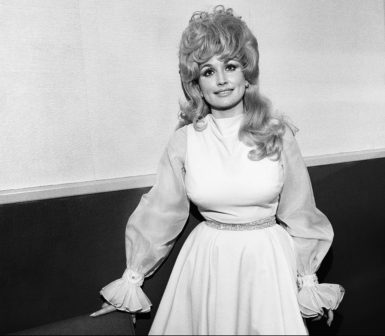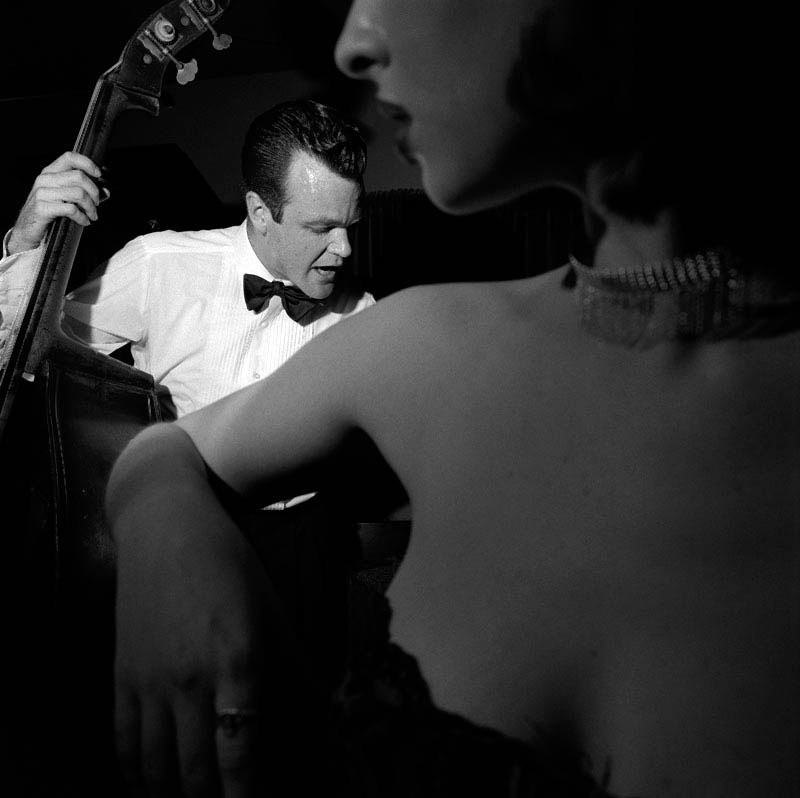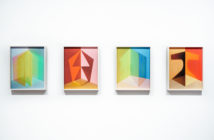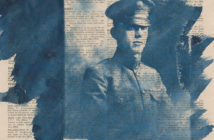The Newport summer is marked by a few large music festivals, events that have drawn the biggest names in jazz and folk to the island since 1954 and 1959, respectively. This year the Newport Art Museum has decided to join in, with two concurrently running photo exhibits documenting the jazz and country performers of yesteryear.
Henry Horenstein’s Honky Tonk: Portraits of Country Music features simple, black and white photographs taken over the course of several decades. Subjects range from famous country stars— Loretta Lynn, Mother Maybelle Carter—to peripheral industry figures like a shoe rep photographed with an enormous prop cowboy boot. There’s also ample documentation of the audiences that went out to see these shows.

Henry Horenstein, Jerry Lee Lewis, Ramada Inn, Boston, Massachusetts, 1976, Black and white silver gelatin print, Courtesy of the Artist and Carroll and Sons, Boston, MA.
The greatness of Horenstein’s photography lies in his stark approach. Country audiences have always required a rags-to-riches authenticity from their performers, not unlike hip hop fans, and this pops up regularly in twangy autobiographical songs about growing up poor but happy. At the same time, audiences like their performers showy, so the singers and musicians are gussied up in rhinestones and big boots and whatever latest accoutrements.
Little of that matters in Horenstein’s photos, which render everyone more or less equal. Sure, the young Emmylou Harris is beautifully perched against a big tree and yes, comedic entertainer Minnie Pearl looks silly with the trademark price tag dangling off the brim of her hat, but for the most part, these are accessible people, photographed at eye level and rarely from an actual stage. It may be a question of taste, but the loudly patterned fabrics of the boozy crowds are maybe the most appealing sartorial details.

Henry Horenstein, Dolly Parton, Symphony Hall, Boston, Massachusetts, 1972, Black and white silver gelatin print, Courtesy of the Artist and Carroll and Sons, Boston, MA.
Honky Tonk could easily chronicle the rural south, though the titles of each piece indicate that plenty of the action was happening in New England, at clubs like the Lone Star Ranch in Reeds Ferry (Merrimack), New Hampshire, which operated until 1983, and the Hillbilly Ranch (later Hillbilly Lounge), a mainstay of Boston’s old Combat Zone. Horenstein was born in New Bedford and attended RISD, where he still teaches, and country remains popular in swaths of New England.
Highlights include Playing for Tips, Tootsie’s Orchid Lounge, Nashville, Tennessee, 1974. In it, a woman in a comically serious pose holds out a cigar box to the camera. There’s a look of distrust, or at least discomfort, in Hot Nuts, Fred’s Lounge, Mamou, Louisiana, 1977, as a woman supports a man, presumably her husband. His eyes are closed, and he’s got his arm around her, though it’s unclear whether he’s holding her out of love or for structural support. Cases of wine sit off to one side. (The bar was popular enough that it opened at seven o’clock in the morning.)
The series began in 1972 and ran for nearly forty years, covering a wide range of trends in country styles. Superstar Garth Brooks didn’t appear at the 1994 edition of the Nashville Fan Fair, a sort of ComicCon signing event for country enthusiasts, so his label instead planted a cardboard cutout of the singer. In Horenstein’s photo, the ghostly Brooks is adorned with dozens, if not hundreds, of signatures from fans wishing him luck and letting him know that they hope to catch him next time.
The gallery has installed a jukebox in the room, one that was only semi-functional when I visited the museum. When it worked, the effect was fun. Less effective were the couple of musical instruments hung in the gallery. Each felt like a placeholder for the inevitably more exciting photographs that could have been there instead.

Larry Fink, Little Brown Jug, California, August 1997, Archival inkjet print, Courtesy of the Artist and Marvelli Gallery, New York City.
Across the foyer from the exhibition, in the museum’s Cushing Gallery, lies Larry Fink’s Somewhere There’s Music retrospective of jazz musicians.
Though the two photographers work in similar media during similar time periods, Horenstein’s honky tonk portraits are lively and exuberant while Fink’s come across as highly calculated. There’s little spontaneity, an absence of improvisation, even in the instances where long exposure times show the performers’ movements.
Larry Fink was born during World War II, just a few years before Horenstein, to politically active parents. As a teenager he associated with beatniks and as an adult grew a class-consciousness; his best-known series, Social Graces, is a sociological study contrasting New York debutante balls with parties in Allentown American Legion halls. His most recent publication is a snarky, long-lost series of photographs of Andy Warhol, photographed among the poor children of the 1960s Lower East Side.
Somewhere There’s Music features some recognizable jazz notables, even for those of us who aren’t really aficionados, including Thelonius Monk, Sarah Vaughn, and John Coltrane. In one particularly surprising grouping, acclaimed jazz trumpeter Roy Hargrove is photographed in New York’s Gramercy Park alongside Eartha Kitt, Ally Sheedy, and 1960s supermodel Veruschka. There’s also ample wall text explaining who many of the musicians are without going into too much superfluous detail.

Larry Fink, Roy Hargrove, Gramercy Park, NYC, 2000, Archival inkjet print, Courtesy of the Artist and Marvelli Gallery, New York City.
Considered on their own, the black and white images are very jazzy in the sense that they’re concerned with mood and style. John Coltrane is represented by squiggly movement lines, while a nearby photos shows upright bass player Sirone deep in concentration. Artfully arranged, any of these would make fine album covers, suggesting an aura of smoky underground nightclubs where aging legends work nightly feats of aural magic.
It’s all fine to look at, but so studied that it’s ultimately devoid of feeling, a La La Land sort of jazz experience –all the signifiers are so instantly recognizable, so authentically jazzy, that you enjoy the work while you’re looking at it but forget the whole thing five minutes later.




